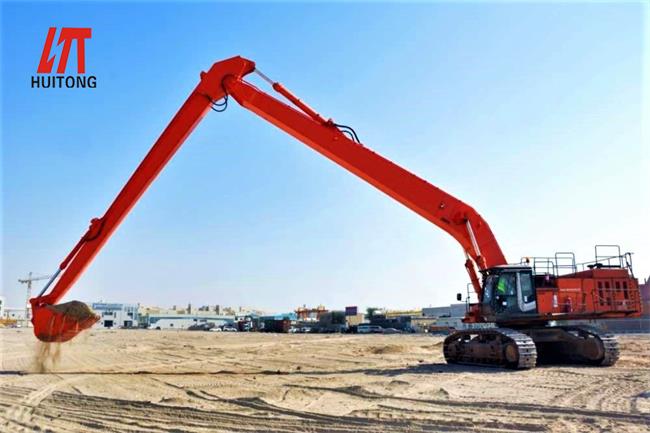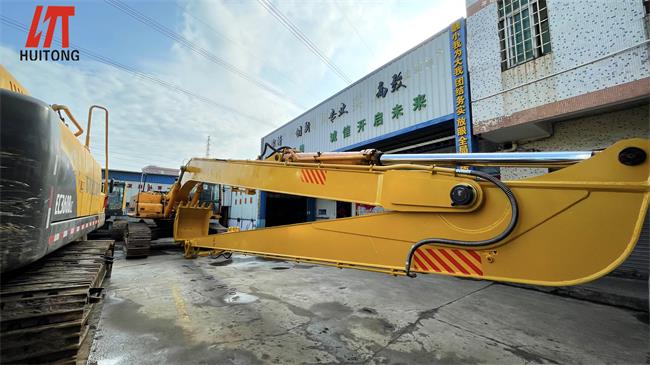 HuiTong
HuiTong  2025-06-13
2025-06-13
We don’t need to say more about the role of excavators in engineering construction. Everyone knows it very clearly. It is a heavy-duty machinery and equipment. Nowadays, it is more common to use excavator long fronts arm for construction, because it has Some of the operating performance is very high, but you must pay more attention to some details in the process of use. Next, I will introduce you.

Since the excavator long fronts arm is longer, heavier, and has greater inertia than the standard arm, it is lighter than the standard arm during operation. The operation process should be smooth, and the action should not be too fast or too violent, and emergency braking is not suitable. The bucket capacity is used according to the factory standard configuration, and it is strictly forbidden to replace and use a large-capacity bucket.
Excavators with excavator long fronts arm should be level and solid. The soft ground should be padded with sleepers or pads. The marsh area should be treated with roadbed first, or the wetland special track shoes should be replaced. Before use, the drive wheel of the crawler excavator should be placed behind the working surface. When leveling the work site, do not use a bucket to sweep or use a bucket to compact the ground.

Except for loose soil, the maximum excavation height and depth of the excavator should not exceed the performance requirements of the machine itself when operating with an excavator long fronts arm. During backhoe operation, the distance between the track and the edge of the working surface should be greater than 2.0m. The key inspection items before operation should meet the following requirements: lighting, signal and alarm devices are complete and effective; fuel, lubricating oil, and hydraulic oil comply with regulations; all articulated parts are connected reliably; and there is no leakage in the hydraulic system.
When the excavator is working with the excavator long fronts arm, the excavator should try to maintain a horizontal position, brake the walking mechanism, and tighten the crawler. When encountering large hard rocks or obstacles, excavation should be done after clearing. Do not use buckets to break rocks, frozen soil, or use single-sided bucket teeth to gnaw hard. When digging a cliff, protective measures should be taken. Umbrella edges and loose large rocks should not be left on the working surface. When there is a risk of collapse, the excavator should be dealt with immediately or the excavator should be withdrawn to a safe area.